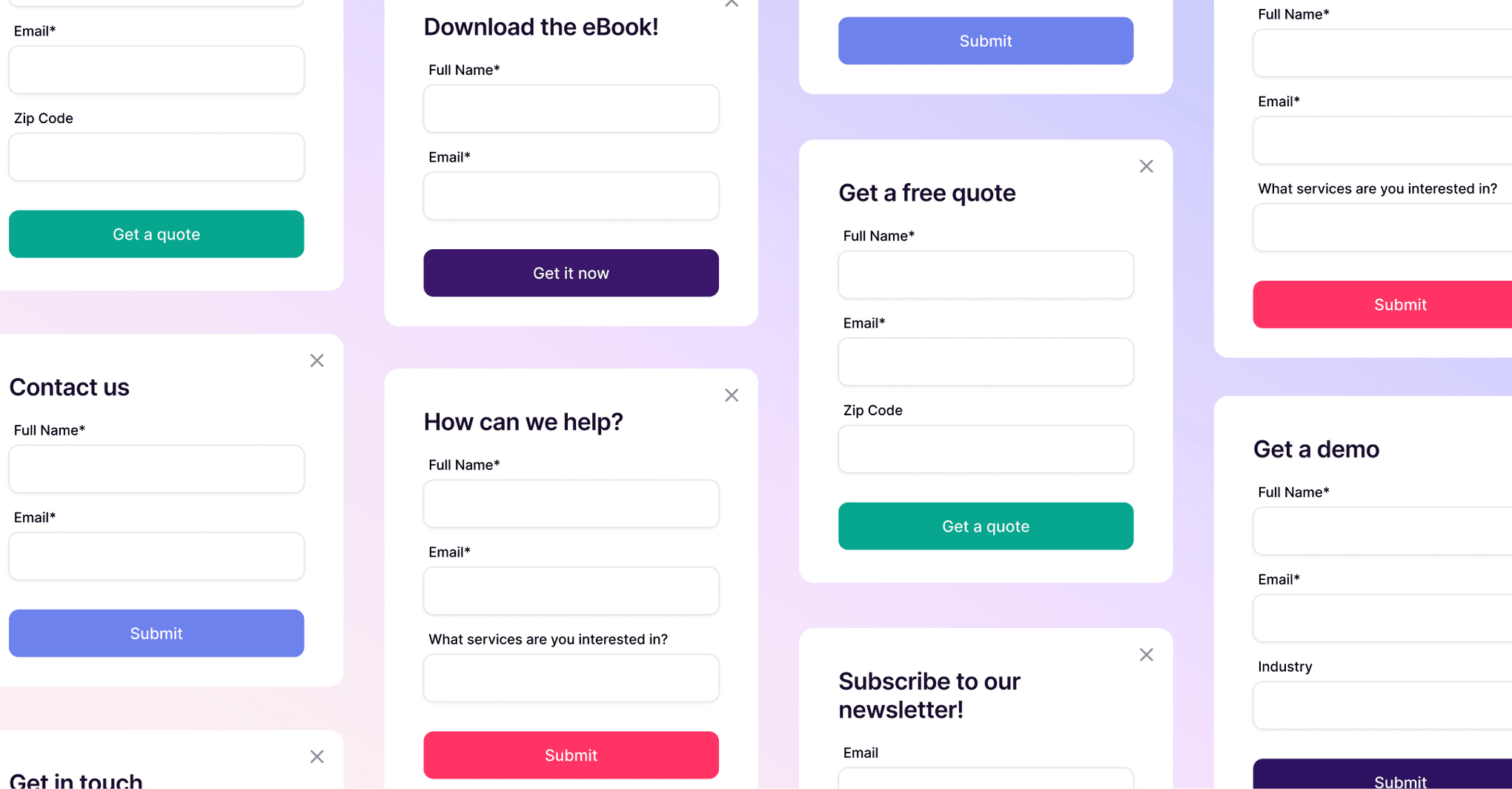Copper Staff
Contributors from members of the Copper team
Clear communication with clients is the secret sauce to thriving as a creative agency. After all, how well you communicate with your clients will directly impact your results. But client-agency disconnects remain incredibly common.
But client-agency communication isn’t always seamless. Here’s why things go off the rails:
- Lack of visibility across the client journey: When multiple accounts are being juggled by different teams, important details can slip through the cracks.
- Minimal transparency with clients: Keeping things "behind the curtain" may seem like a smart move, but too much secrecy can erode trust over time.
For example, you may worry that if you tell your clients too much about how the sausage is made, they’ll try to do it on their own. Or you may hesitate to reveal the details of your fee structure to avoid prying questions.
These practices might seem beneficial in the short term, but they could actually be harming your business in the long run as client trust and loyalty begin to erode. With 1 in 3 people willing to leave a company they love after one bad experience, and 92% ready to jump ship after 2 to 3 negative experiences, according to PwC, keeping the client experience positive is critical to fostering long-lasting client relationships. And that all starts with communication.
Foster loyal clients by building a human connection
Honest, consistent communication makes clients feel valued. It builds trust, manages expectations, and prevents last-minute fire drills. Plus, when clients know what’s happening at all times, they’re more likely to stick around for the long haul.
Get the latest from our blog every month
8 best practices to create a clear communication plan
Healthy agency-client communication helps solidify relationships and drive your business’ ongoing success. These eight best practices will help you get started with a clear plan.
1. Be straightforward about scope
Before the work even begins, align with your client on goals, KPIs, and project scope. If you’re clear about deliverables, deadlines, and budget upfront, there’s less room for misinterpretation down the road. Nobody likes surprise "scope creep!"
Additionally, document everything in writing so that both parties have a reference point to look back on. A shared project document or a CRM tool like Copper can help keep everyone aligned. This way, if there’s ever confusion down the line, you can point back to what was originally agreed upon and adjust accordingly.
2. Define communication boundaries (yes, boundaries!)
Communication is key, but you don’t need to be available 24/7. Set expectations for when and how you’ll communicate. Will you have weekly check-ins? Are urgent messages via Slack okay, or do they need to go through email? Defining this early prevents unnecessary back-and-forth.
By setting clear boundaries, you can avoid burnout and improve efficiency. Having structured check-ins ensures that clients get updates at a predictable cadence, rather than bombarding you with emails and calls at random times. Plus, when clients know how and when to reach you, they feel more confident that their concerns will be addressed in a timely manner. Sticking to these communication best practices prevents misalignment and keeps everything running smoothly.
Create a client calendar to keep everyone on track
Also, consider establishing boundaries around the avenues and frequency of client communications. Perhaps you reserve status update questions for scheduled weekly or bi-weekly meetings. Or maybe you check and respond to questions once a day. Clarify how long the client should expect to wait to receive a response from an email: 12 hours, 24 hours or more? Whatever works for your agency, establish those boundaries up front to keep things running smoothly.
3. Learn your client’s preferred communication style
Have you ever heard about love languages? Clients have them too.
You’ll need to communicate after the deal is closed and throughout the entire contract. But everyone’s communication styles are different, so make sure to figure out how your client prefers to communicate.
Some clients love calls, while others would rather communicate via email or even voice notes. Ask them how they like to receive updates so you can tailor your approach accordingly. A great client communication plan meets clients where they’re most comfortable.By understanding their preferences, you can make interactions more seamless and enjoyable. A client who prefers written documentation may appreciate detailed recap emails after every meeting, while one who loves quick chats may prefer a five-minute voice note instead.
The best way to do this is to ask them directly in your onboarding call or questionnaire. Find the channels that work for your relationship and establish expectations from there.
4. Own up to mistakes (and have a plan to fix them!)
No campaign or project goes perfectly every time. When things don’t go as planned, be upfront about it. Let clients know what happened, what you’re doing to fix it, and how you’ll prevent it from happening again. Transparency builds trust—clients would rather hear the truth than find out later that something went wrong.
Owning up to issues also shows accountability and professionalism. Instead of hiding behind excuses, be proactive in offering solutions.
For example, if a deadline is missed, communicate the reason and provide an updated timeline. Clients appreciate honesty and a willingness to course-correct rather than being left in the dark. Effective client communication plans always include a strategy for handling setbacks.
5. Push back (politely!) when necessary
Being a “yes” person might keep your clients happy in the short term, but it doesn’t do much for building ongoing relationships. Remember, your clients came to you for your expertise, so it’s important to politely assert your knowledge when appropriate to ensure your clients get the guidance they need to achieve their goals — even when it might not be what they want to hear. If the CEO is claiming that their customers are large retailers while the recent customer survey you performed tells otherwise, for example, gently guide them to be open to a shifting target audience based on the data. And perhaps invite them to attend the next customer interview you’re conducting as part of the research process.
Pushing back politely is also useful because it will make your clients feel comfortable enough to push back when they’re unhappy about a certain approach. If everyone feels comfortable sharing ideas and thoughts, everyone will end up much happier in the end — and the outcomes will be more likely to meet expectations all around.
6. Use clear reports to show results
Reports are crucial for agency-client relationships. Regular reporting shows clients where their money is going and how it’s benefiting them. Use reports to show your clients tangible proof of the results from your efforts, but as with everything, be transparent. Don’t overcomplicate reports. Instead, keep them simple so your clients know exactly what’s happening at all times and be consistent in the format and presentation with each report so they can easily follow along and track progress.
Clear, straightforward reports help your clients track progress over time
7. Be transparent about billing and contracts
Nobody likes unexpected charges. Make sure your clients understand your pricing structure, potential overages, and billing cycle. If a project is about to go over budget, give them a heads-up before sending an invoice. This prevents awkward money conversations later.
Setting up automated invoice reminders and transparent pricing breakdowns makes billing smoother for both parties. Clients will appreciate knowing exactly what they’re paying for, and you’ll avoid conflicts over unexpected fees. The more clarity around costs, the easier it is to maintain a good working relationship. Communication best practices should always cover financial transparency.
8. Use a CRM or agency management software to keep the communication straight
Don’t try to manage all the communication details and preferences inside a spreadsheet and emails — it’s enough to make your head spin, and cause some balls to drop. And don’t even get us started on the wild goose chase trying to search down critical client documents when you don’t know where your colleagues saved them — that’s where CRM file organization features come in handy. By making the switch to a CRM for agencies like Copper, you can keep communication consistent and ensure your whole team is on the same page.
Juggling multiple clients and projects? Copper’s Feed View keeps all your client updates, emails, and meeting notes in one easy-to-navigate space. The Following tab lets you filter updates by priority accounts, so you’re only seeing what matters most. And if you need to go back and check project history the Preview Drawer has you covered — no more clicking through endless tabs.
By centralizing communication in one place, you reduce miscommunications and save time. Instead of searching through emails or Slack threads, everything you need is right where you expect it. This means fewer missed messages, better collaboration, and an all-around smoother workflow. A strong client communication plan includes the right tools to streamline operations.
Keep everyone in sync with all customer data in a single place – your CRM
Keep client communication effortless
A great client communication plan is all about clarity, consistency, and connection. The better your process, the smoother your relationships—and the happier your clients will be.
Keep these eight best practices in mind as you create your communication plan, and approach all client interactions with transparency and clarity first.
Copper CRM is the agency management tool that helps streamline agency communication right from your inbox. Copper works in the background so you can keep client projects running smoothly without switching between multiple tabs and tools. Try Copper free for 14 days to see how we can help simplify nurturing your client relationships.






